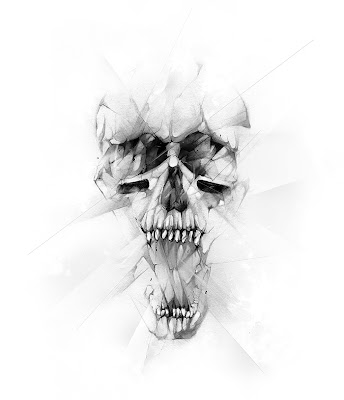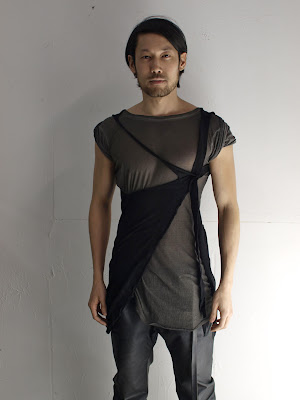Let’s face it: in the context of art that’s ‘cool’, a plain portrait is boring. The unfortunate reality is that there are too many other people out there who are capable of doing exactly what you can do. Something else has to be happening.
Over the past year, I have experimented – simply through pursuing a creative 'mistake’ I once made – with geometrical lines of distorted light. Perhaps it’s a coincidence, but I’ve spotted a peculiar pattern recently with illustrators/artists (Agnes Cecille, Carne Griffiths) playing with aesthetics that replicate shattered glass, cubism and bewitching light reflections. Is there any particular reason for this trend, apart from the fact that it looks effing radical?
And I'll tell you why this kind of style is so important today. As you’ve probably detected from my attitude towards the cretinous use of Photoshop, artists appear to be fighting back with work that defies Adobe’s determined mission to make pencils - indeed humans themselves – obsolete. Whatever you can do, I can do better.
Alexis Marcou is an inspiring saviour who makes our craft still worth persevering. His work is clearly the product of blood, sweat, and a shit load of graphite. Marcou uses an intriguing juxtaposition in his work: the monochrome becomes activated by the most minimalist traces of colour, suspending his figures between frozen stasis and explosive chaos.
My favourite piece of his has to be ‘Noire’ (first image) though I’m sure that comes as no surprise to those of you who know his work. Don’t take this the wrong way, but it’s the wet-look about the piece which gets me most – and before you whine that it’s just a quick photoshop job – head over to his Process page to be proved firmly wrong.
Such a simple image, yet that fluidity about it delivers a selection of mysterious interpretations: Is the figure frozen in time/death? Crying in the pouring rain? Drenched in blood? Marcou’s obsession with lines renders his work with a highly contemporary and virtual feel, playful with dimensions so that his finished pieces offer multiple zones of vision. Marcou's perspectives have reached vertiginous heights with commissions already from both Nike and HP.
Marcou encourages aspiring artists, "Create your own unique style. When working for clients listen but don't compromise your style." Take note - I'm currently designing a poster for a BBC film, and throughout the entire process I've been plagued with paranoia that I'm wasting my time because I'm still creating in a way which will guarantee my own aesthetic satisfaction above anyone else's. That's not selfish, right?
I'm holding you responsible, Marcou.
I'm holding you responsible, Marcou.























.jpg)






